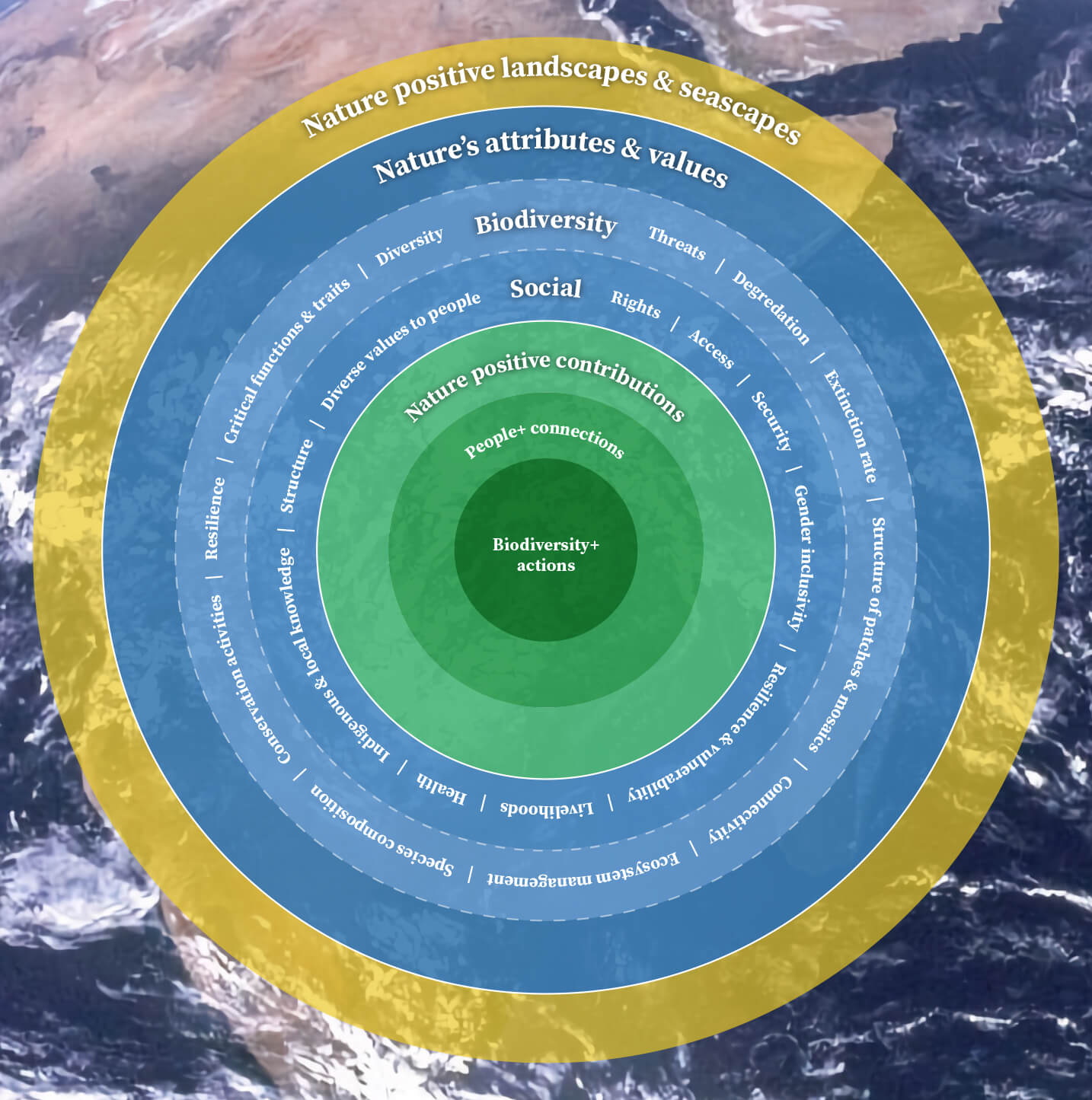The context


Author: Neil Cousins
Affiliation: Bluedot Associates
Date: 1st December, 2022
Understanding nature positive and the role of organisations in supporting the goal
Nature positive is an aspirational cumulative goal. As set out in the paper ‘A Nature Positive World: The Global Goal for Nature’, the goal relates to a combined societal outcome that halts and reverses nature loss by 2030 measured against a static baseline of 2020, with full recovery of functioning ecosystems to safeguard the stability and resilience of life on Earth by 2050. Achieving the goal seeks to improve resilience of all nature’s critical attributes and increase the well-being of people. Resilience and well-being may not be measured against a baseline, but improvement is inherent within the goal.

Whether the goal for nature positive can be met is dependent on a range of actions that cumulatively contribute to reaching these desired outcomes. An individual organisation or the specific activities they undertake cannot be determined as being nature positive in isolation. This is primarily because it is improbable for any organisation to determine the broad ecosystem outcomes the goal seeks due to scale and the multiple influences on nature’s attributes. In addition to this, most organisations cannot avoid some losses from occurring because of direct operations or the complex processes within their value chains. Even when an organisation makes net positive impact commitments it may not be possible to accurately measure all impacts and gains; and commitments may only relate to aspects that are under direct control. Significant losses may also occur before net gain outcomes are achieved. However, an organisation can make contributions towards the goal by halting loss and through achieving an evidence-based net positive impact in relation to their direct operations and activities within their value chains. For example, this may be achieved through robust application of the mitigation hierarchy with outcomes that deliver no net loss or net gains. Beyond just mitigating impacts, organisations can also support transformative approaches that seek to halt and reverse losses across the ecosystems that encompass their direct and indirect area of influence and beyond. Organisations may be able to align and integrate existing approaches that help to halt and reverse nature loss. For instance, this may include the design and implementation of Natural Climate Solutions (NCS) and other types of Nature-based Solutions (NbS).

Actions that are positive for biodiversity should be delivered in a socially just and equitable way. In addition, approaches should strive to deliver people-positive outcomes over time; and this will help to create the societal conditions that support the delivery of a nature positive outcome.

An organisation will have an influence on a range of nature’s attributes and values. As stated above, nature positive requires a net outcome related to a static baseline state of 2020. Determining an organisation’s impacts will require an understanding of nature’s attributes and values within its areas of influence. This understanding will also be needed to determine how actions may contribute to a nature positive goal. Therefore, making the concept of nature positive operational will require decisions to be made on where to implement actions and for areas to be established for determining baseline and assessing outcomes.
To contribute to meeting nature positive targets, organisations will need to align the outcomes of their activities to protecting and improving nature’s attributes and values. The balance of contributions made by organisations should be informed by the level of understanding of nature’s attributes and values, the certainty of impacts related to an organisation’s activities and certainty with respect to the outcomes that will arise from proposed actions. Uncertainties may be addressed through adopting avoidance as a priority, and where gains are likely, through implementing ecologically appropriate ecosystem restoration. Avoidance must be prioritised where losses to critical ecosystems are irrecoverable, i.e., where replacement or restoration is not feasible.

To help operationalise the concept of nature positive, metrics will need to be established that relate to loss and improvement to nature’s attributes; and approaches will need to enable individual and cumulative contributions to be determined. An emerging approach is the Species Threat Abatement and Restoration metric (STAR), which combines data on species’ distributions and threats to help with the identification of areas where actions to abate threats or restore habitats can help to reduce species extinction risk and contribute to conservation goals (a link to STAR is provided under our summary of restoration tools and guidance). Currently, STAR only covers birds, amphibians, and mammals on land but will be expanded to other taxonomic groups and biomes soon. There will also be a requirement for consistent approaches for assessment, monitoring and disclosure. The International Union for Conservation of Nature (IUCN) is developing a methodology to measure and track contributions to nature-positive goals which may offer a consistent framework. It is yet to be seen how this will converge with other supporting frameworks, such as, Science Based Targets for Nature (SBTN) and the Taskforce on Nature-related Financial Disclosures (TNFD). The post-2020 Global Biodiversity Framework will provide an overarching approach to support the delivery of nature positive outcomes, including the top-down goals and targets to which organisations can align. Further information and links to the various approaches that can inform how organisations may contribute to nature positive can be found in our blog ‘the story behind nature positive’.
